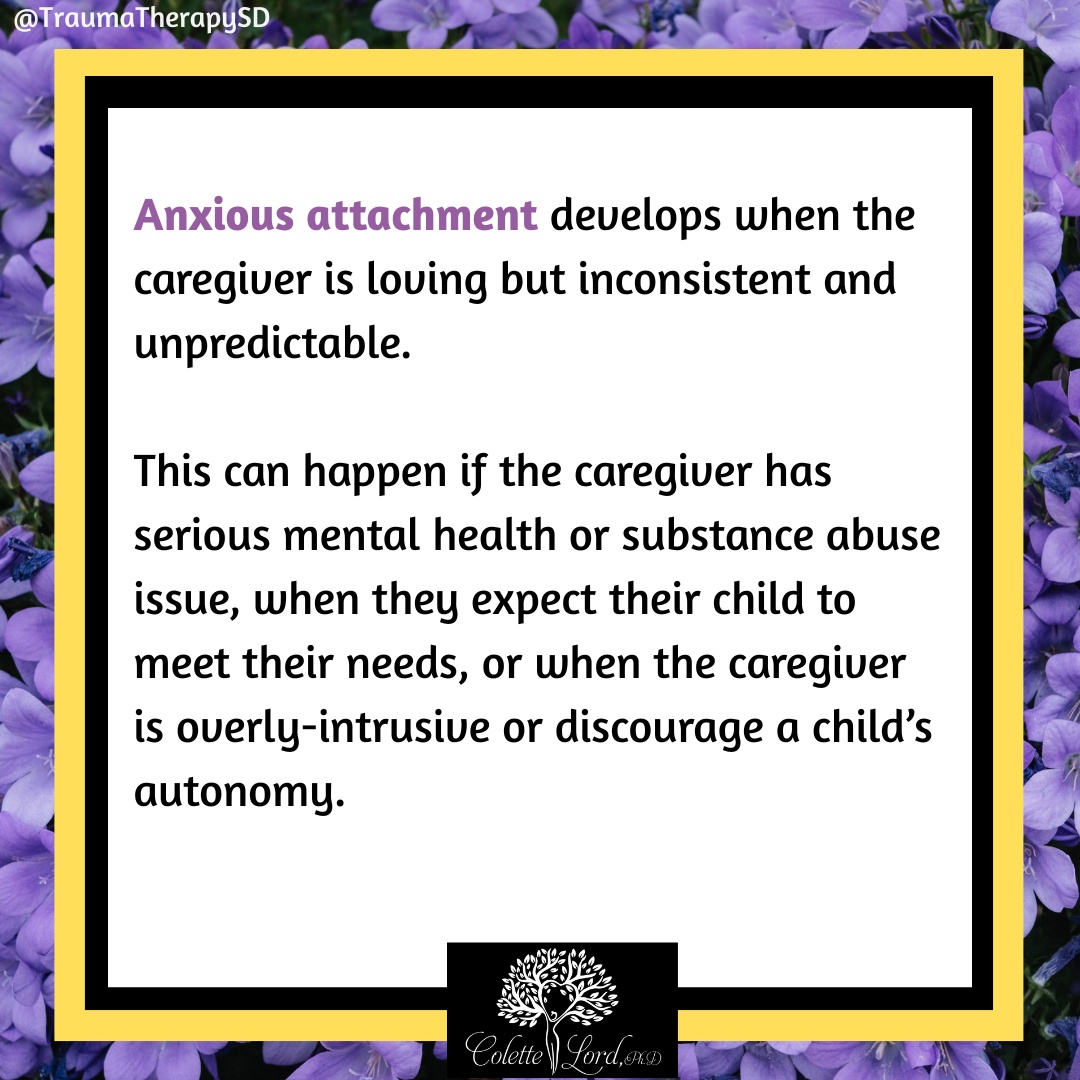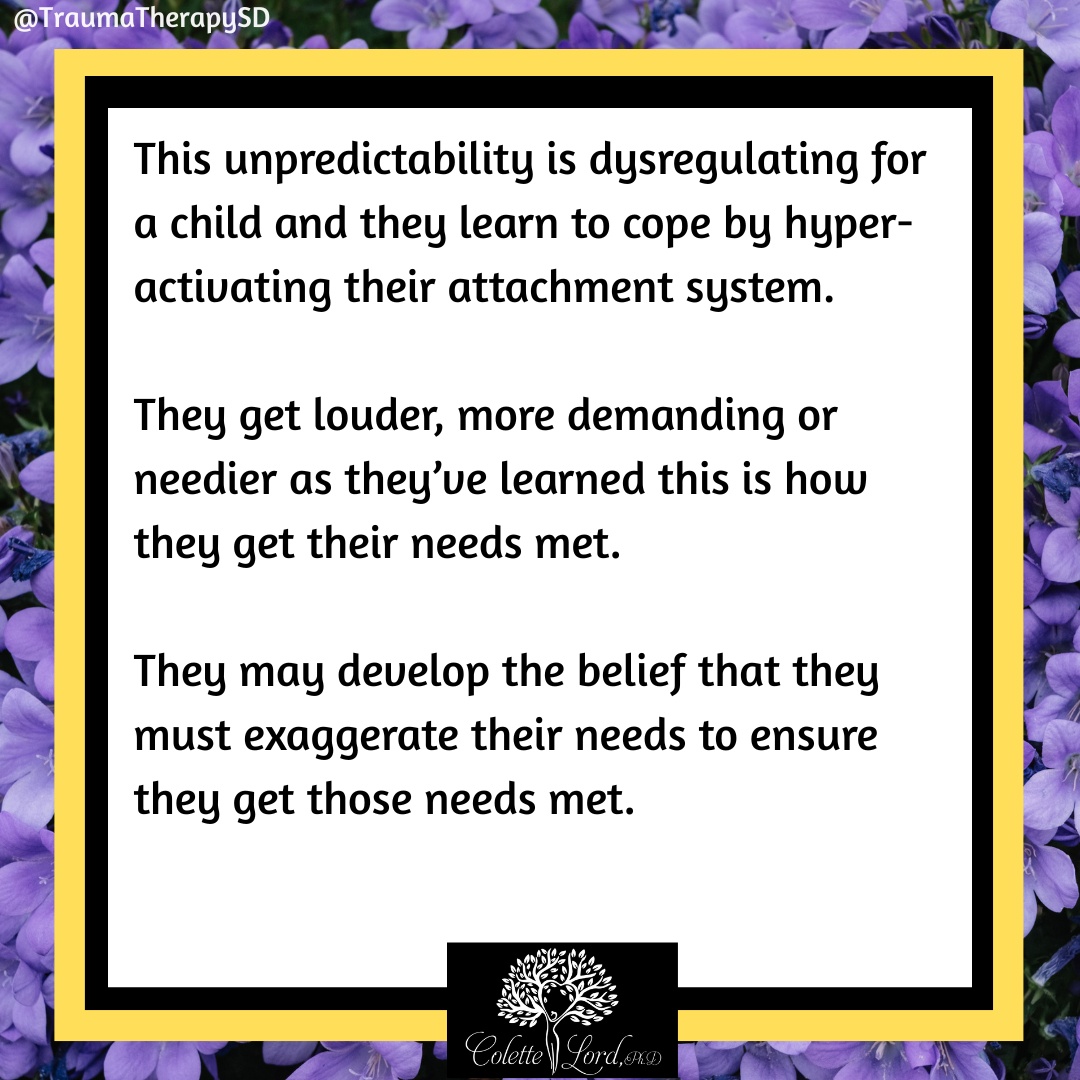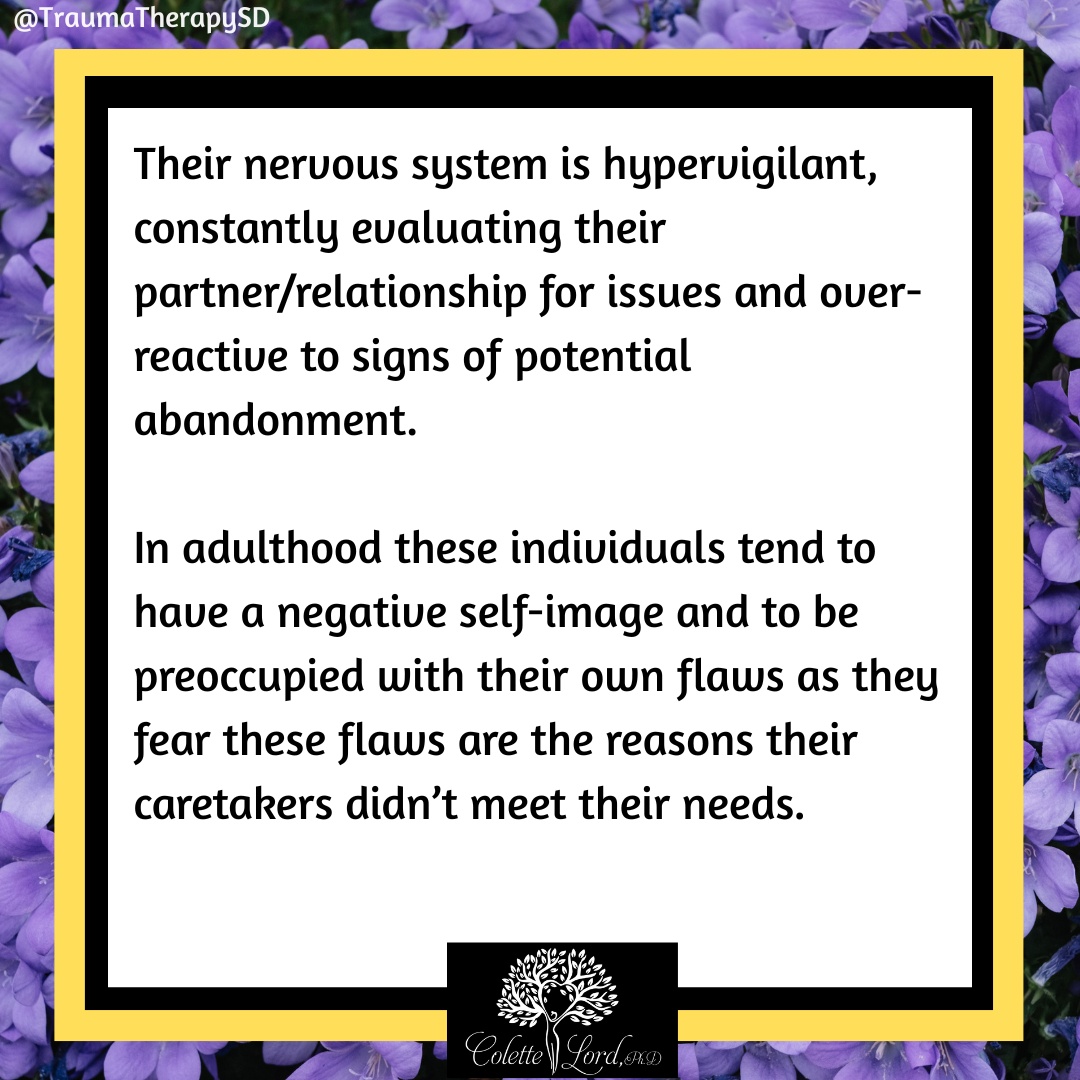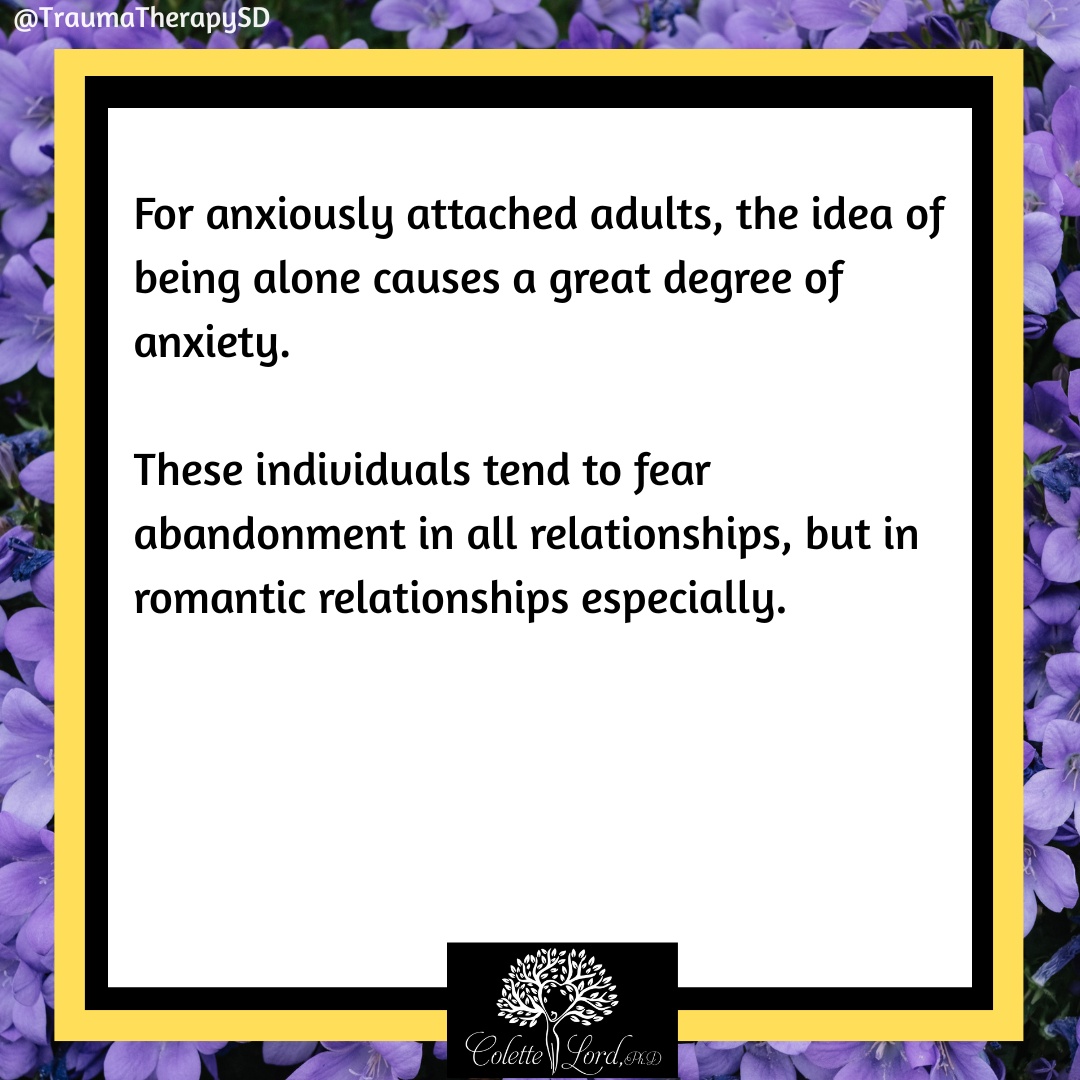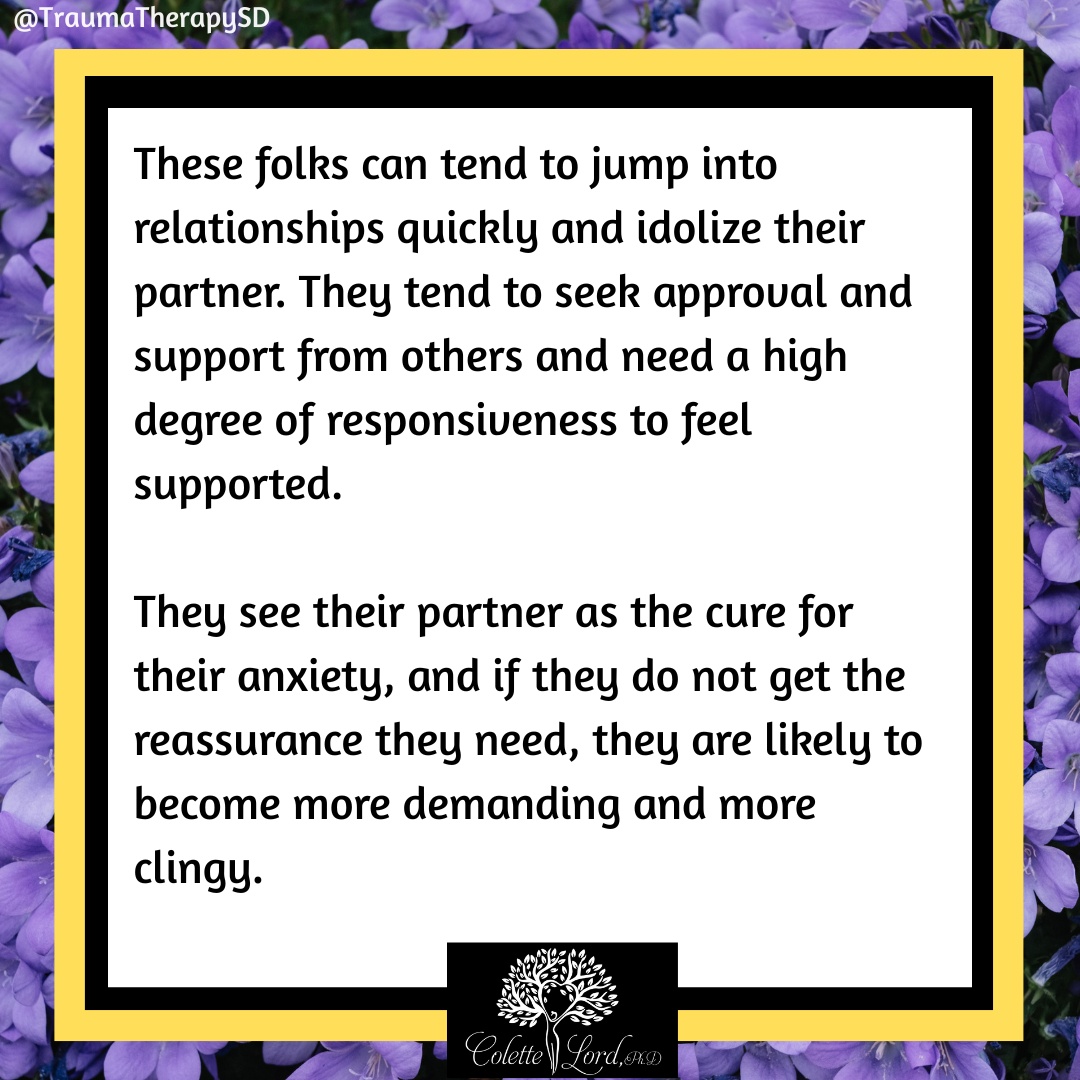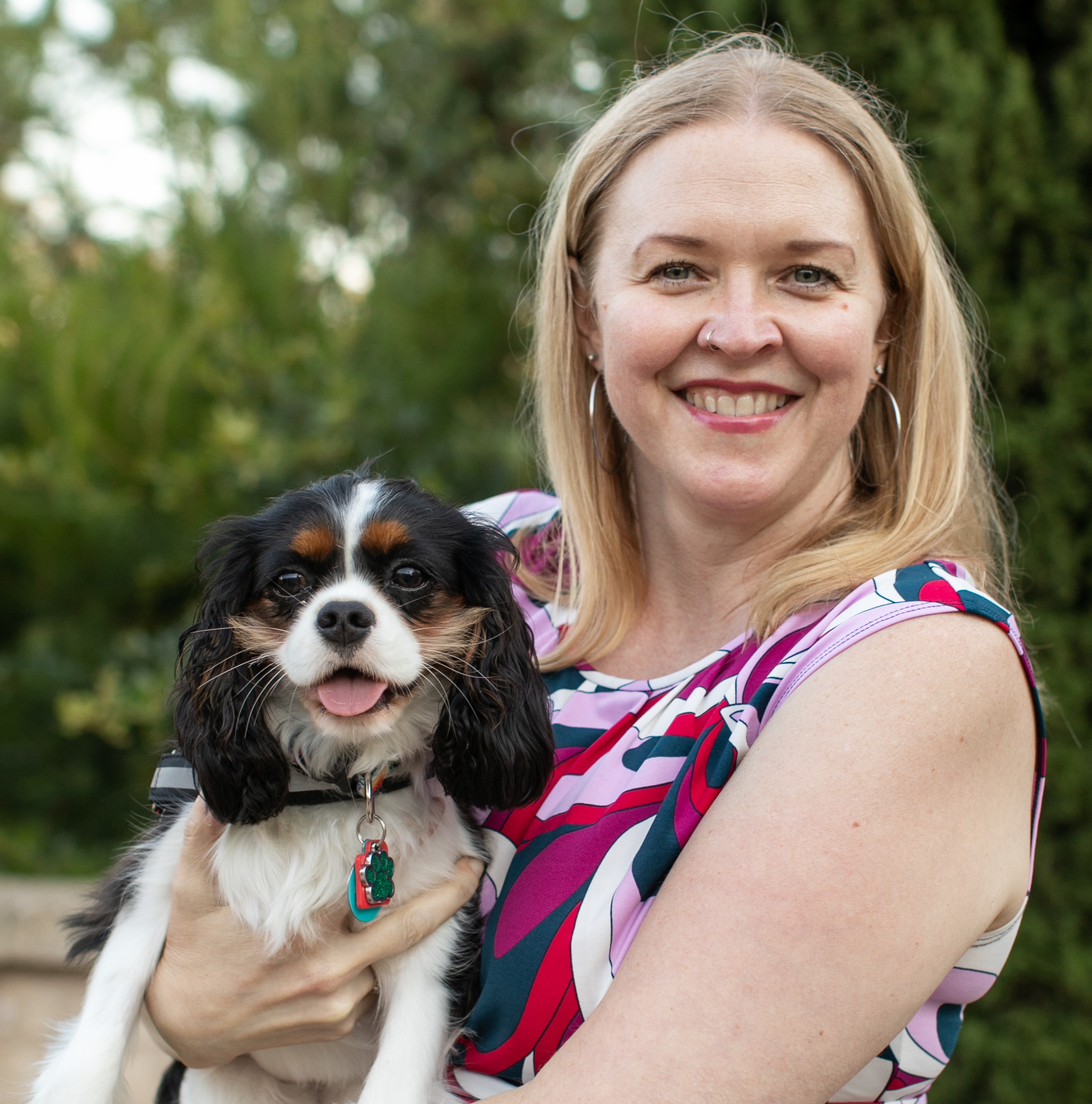Anxious Attachment Style
Anxious attachment develops when the caregiver is loving but inconsistent and unpredictable. This can happen if the caregiver has serious mental health or substance abuse issue, when they expect their child to meet their needs, or when the caregiver is overly-intrusive or discourage a child’s autonomy.
This unpredictability is dysregulating for a child and they learn to cope by hyper-activating their attachment system. They get louder, more demanding or needier as they’ve learned this is how they get their needs met. They may develop the belief that they must exaggerate their needs to ensure they get those needs met.
Their nervous system is hypervigilant, constantly evaluating their partner/relationship for issues and over-reactive to signs of potential abandonment.
In adulthood these individuals tend to have a negative self-image and to be preoccupied with their own flaws as they fear these flaws are the reasons their caretakers didn’t meet their needs. They worry a lot about their relationships (romantic or friendship), tending to analyze and over-think the meaning and motivation behind what others say and do.
Their working model of relationships is that they must be vigilant and attentive in order to get their needs met, because they cannot trust others will be there for them when they need it (just as they could not rely on their caregivers to meet their needs).
For anxiously attached adults, the idea of being alone causes a great degree of anxiety. These individuals tend to fear abandonment in all relationships, but in romantic relationships especially.
These folks can tend to jump into relationships quickly and idolize their partner. They tend to seek approval and support from others and need a high degree of responsiveness to feel supported. They see their partner as the cure for their anxiety, and if they do not get the reassurance they need, they are likely to become more demanding and more clingy.

